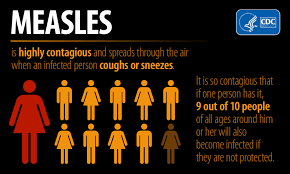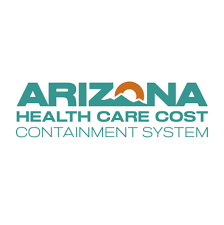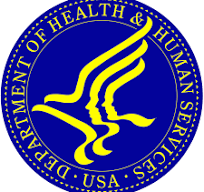The real key to preventing measles outbreaks and epidemics is to have good vaccination rates – especially among kids. Sadly, Arizona has among the lowest childhood vaccination rates in the US – meaning that we’re primed for the kind of measles outbreak that’s currently underway in Texas and New Mexico.
Many things need to change in order to improve our rates – some are policy changes (eliminating the personal exemption) and some are operational (building back the thin network of Vaccines for Children network).
New CDC Report: Arizona Has Among the Lowest Childhood Immunization Rates in the U.S.
In the mean-time, a few folks (older adults) have asked me over the last week whether they should get a measles booster shot before the outbreak makes it to Arizona.
Good question. Why? Depending on when you were born, you may have had the disease and are protected, you may have had the old, less effective vaccine, or you may have only had one dose.
The measles vaccine (MMR) became widely available in 1963, and the highly effective two-dose schedule became standard in 1989.
Here’s what you need to know based on your age and vaccination history:
- Born before 1957 (About 67 or older): Most people in this group likely had measles as a kid and have natural immunity (like me). If you didn’t have the disease, chances are you were vaccinated at a school vaccine clinic – remember those nurses in the cafeteria with things that looked like power drills, and the kids walked the vaccine ‘gauntlet’? I sure do.
- Bottom line: If you’re over 67 and didn’t have the disease as a kid you should get a booster.
- Born between 1957 – 1967: You may have had measles or got a single-dose vaccine. The early measles vaccines (the ones used before 1968) were not as effective as the ones that came after ‘68. If you’re in this group and haven’t had a second dose, getting a booster is a good idea.
- Bottom line: If you’re between 57 and 67 and didn’t have the disease you should get the booster.
- Born between 1968 – 1989: If you’re in this age group, chances are you only got one measles vaccine as a child. We later learned that you really need two doses for full protection, and the two-dose schedule wasn’t introduced until 1989.
- Bottom line: If you’re between 36 and 57 years old and haven’t had a second dose, getting a booster is a good idea.
- Born in 1990 or later: If you’re in this age group and your parents/guardians followed the vaccine schedule (two doses, usually at ages 1 and 4) you’re good.
- Bottom line: If you’re less than 36 years old and your parents or guardians followed the vaccine recommendations, you’re good to go. If they didn’t – complete the two-dose series before measles makes it here.
If you’re unsure of your vaccination history, your doctor can order a simple blood test to check your immunity, but to be honest – it’s probably best to just go ahead and get the booster rather than a blood draw and titer test.
The measles vaccine is widely available at pharmacies, clinics and the like. But – it’s a good idea to call and check first to make sure the pharmacy has them in stock.








